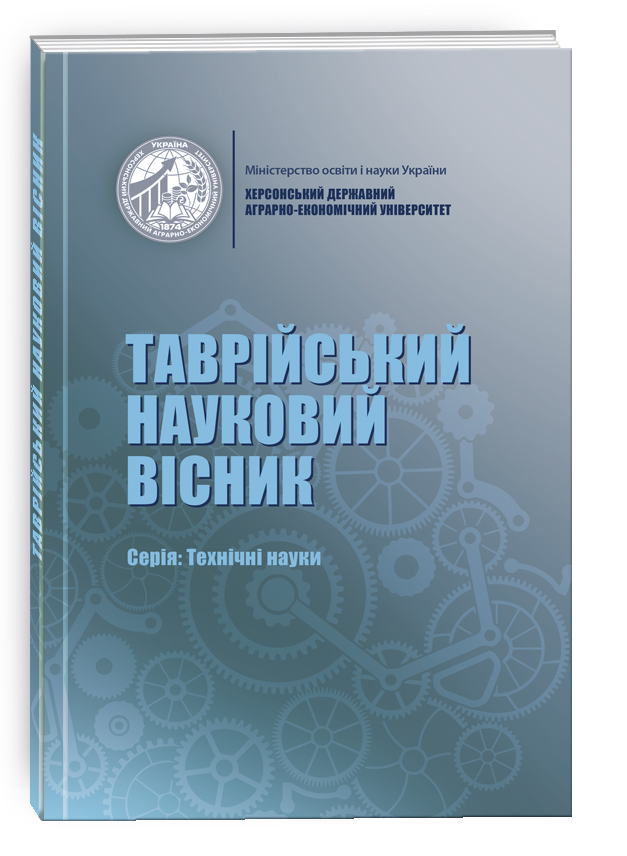FUZZY С-MEANS CLUSTERING METHOD FOR ORGANIZING PASSENGER TRANSPORT IN A SMART CITY
DOI:
https://doi.org/10.32782/tnv-tech.2025.1.24Keywords:
passenger transport; smart city; clustering analysis; fuzzy C-means method; systems analysisAbstract
The rapid growth of data volumes requiring analysis, grouping and clustering justifies the relevance of searching for methods for their clustering on a global scale, which is especially relevant in the organization of public transport. The object of the study is the process of clustering using the fuzzy C-means method of big data in the organization of passenger transport in the city. The subject is the principles of optimizing the operation of public transport and improving the implementation of their schedules. The goal is to study the features of using the fuzzy C-means method to optimize routes in the organization of passenger transport. Tasks: study the features of the fuzzy C-means method metric in the organization of passenger transport in a smart city; carry out the division of the studied data set into clusters; form a fuzzy C-means clustering algorithm taking into account its effective metric.As a result of the research, it was found that when clustering a dataset on the time of execution of each public transport run within each hour of the day for each week during the year, the fuzzy C-means method taking into account the fuzzy distribution metric is quite simple and effective for its processing, has practical value in identifying runs or their groups, where changes in the time of execution of each run for each week are due to changes in traffic during the day or weather conditions. Thanks to the use of the membership function, this contributes to the segmentation of transport routes, reduces the probability of errors, which increases the quality of management decision-making in the organization of transportation.Conclusions. As a result of using the fuzzy C-means method taking into account the fuzzy distribution metric when determining the number of clusters, sections of the studied route were established that differ in traffic intensity and seasonality. It is substantiated that the fuzzy C-means clustering method sufficiently well takes into account the specifics of the task of optimizing the organization of passenger transportation in a smart city, and is also simple and effective in justifying management decisions regarding changes in vehicle travel schedules.
References
Ezugwu A. E., Ikotun A. M., Oyelade O. O., Abualigah L., Agushaka J. O., Eke C. I., Akinyelu A. A. A comprehensive survey of clustering algorithms: State-of-the-art machine learning applications, taxonomy, challenges, and future research prospects. Engineering Applications of Artificial Intelligence. 2022. № 110, 104743. DOI: 10.1016/j.engappai.2022.104743
Singh J., Singh D. A comprehensive review of clustering techniques in artificial intelligence for knowledge discovery: Taxonomy, challenges, applications and future prospects. Advanced Engineering Informatics. 2024. № 62, 102799. DOI: 10.1016/j. aei.2024.102799
Bublyk M., Kowalska-Styczeń A., Lytvyn V., Vysotska V. The Ukrainian economy transformation into the circular based on fuzzy-logic cluster analysis. Energies. 2021. № 14(18). P. 5951. DOI: 10.3390/en14185951
EsterM., Kriegel H.-P., Sander J., Xu X. A density-based algorithm for discovering clusters in large spatial databases with noise. Proc. of the 2-nd Int. Conf. on Knowledge Discovery and Data Mining. 1996. P. 226–231.
Kowalska-Styczeń A., Bublyk M., Lytvyn V. Green innovative economy remodeling based on economic complexity. Journal of Open Innovation: Technology, Market, and Complexity. 2023. V.9 (3), 100091. DOI: 10.1016/j.joitmc.2023.100091
Jain A. K. Data clustering: 50 years beyond K-means. Pattern Recognition Letters. 2010. № 31(8). P. 651–666. DOI: 10.1016/j.patrec.2009.09.011
Kohonen T. Self-Organizing Maps (3 ed). Bon, Springer, 2001. 554 p.
Matseliukh Y., Bublyk M., Bosak A., Naychuk-Khrushch M. The role of public transport network optimization in reducing carbon emissions. CEUR Workshop Proceedings. 2024. Vol. 3723. P. 340–364. URL: https://ceur-ws.org/Vol-3723/paper19. pdf
Koshtura D., Bublyk M., Matseliukh Y., Dosyn D., Chyrun L., Lozynska O., Karpov I., Peleshchak I., Maslak M., Sachenko O. Analysis of the demand for bicycle use in a smart city based on machine learning. CEUR workshop proceedings. 2020. Vol. 2631, P. 172–183. URL: https://ceur-ws.org/Vol-2631/paper13.pdf (дата звернення: 01.02.2025).
Asha A., Arunachalam R., Poonguzhali I., Urooj S., Alelyani S. Optimized RNN- based performance prediction of IoT and WSN-oriented smart city application using improved honey badger algorithm. Measurement. 2023. № 210. P. 112505. DOI: https:// doi.org/10.1016/j.measurement.2023.112505
Bezdek J. C. Pattern Recognition with Fuzzy Objective Function Algorithms. Bon, Springer, 1981, 245 p.
Boreiko O., Teslyuk V. Structural model of passenger counting and public transport tracking system of smart city.Perspective Technologies and Methods in MEMS Design, Proc. of Int. Conf. 2016. P. 124–126. DOI: https://doi.org/10.1109/ MEMSTECH.2016.7507533
Bublyk M., Udovychenko T., Medvid R. Concept of smart specialization in the context of the development of Ukraines economy. Economics. Ecology. Socium. 2019. № 3(2). P. 55–61. DOI: 10.31520/2616-7107/2019.3.2-6
Bublyk M.I., Dulyaba N.I., Petryshyn N.Y., Drymalovska K.V. Analysis of the development of educational and scientific activity of institutions of higher education. Economic analysis. 2018. № 28 (1). P. 30–39.
Katrenko A., Krislata I. Veres O., Oborska O., Basyuk T., Vasyliuk A., Rishnyak I., Demyanovskyi N., Meh O. Development of traffic flows and smart parking system for smart city. CEUR Workshop Proceedings. 2020. Vol. 2604. P. 730–745. URL: https:// ceur-ws.org/Vol-2604/paper50.pdf.
Podlesna L., Bublyk M., Grybyk I., Matseliukh Y., Burov Y., Kravets P., Lozynska O., Karpov I., Peleshchak I., Peleshchak R. Optimization model of the buses number on the route based on queueing theory in a Smart City. CEUR Workshop Proceedings. 2020. Vol. 2631. P. 502–515. URL: https://ceur-ws.org/Vol-2631/paper37. pdf (дата звернення: 01.02.2025).
Saxena A., Prasad M., Gupta A., Bharill N., Patel O. P., Tiwari A., Er M. J., Ding W., Lin C. A review of clustering techniques and developments. Neurocomputing. 2017. № 267. P. 664–681. DOI: 10.1016/j.neucom.2017.06.053
Fu Y., Wang X., Meng F., Wang S., Song Y., Wang Y. Behavioural loyalty analysis of bus passengers using multi-source data fusion. Journal of Transport Geography. 2025. № 123. P. 104143. https://doi.org/10.1016/ j.jtrangeo.2025.104143
Chen J., Zheng L., Hu Y., Wang W., Zhang H., Hu X. Traffic flow matrix-based graph neural network with attention mechanism for traffic flow prediction. Inf. Fusion. 2024. № 104. P. 102146. https://doi.org/10.1016/ j.inffus.2023.102146
Chen Z., Wen J., Geng Y. Predicting future traffic using hidden Markov models. Proc., 2016 IEEE 24th Int. Conf. on Network Protocols (ICNP). 2016. P. 11.
Celebi M. E., Kingravi H. A., Vela P. A. A comparative study of efficient initialization methods for the k-means clustering algorithm. Expert Systems With Applications. 2012. № 40(1). P. 200–210. DOI: 10.1016/j.eswa.2012.07.021
Chukhray N. Shakhovska N., Mrykhina O., Bublyk M., Lisovska L. Consumer aspects in assessing the suitability of technologies for the transfer. Computer sciences and information technologies, CSIT 2019: Proc. of Int. Sci. Tech. Conf. 2019. V. 3. P. 142–147. DOI: 10.1109/STC-CSIT.2019.8929879







